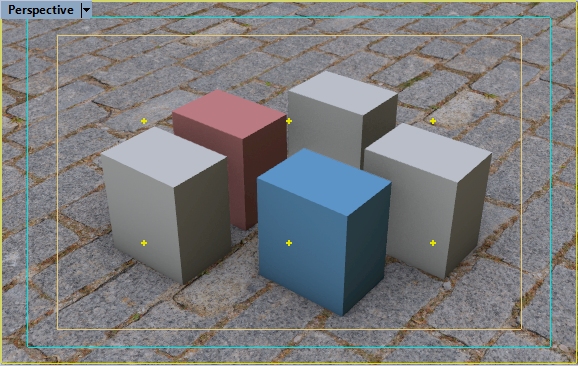Introduction
A Safe Frame is a guide to help ensure that the most important elements of a scene will appear inside a certain region of the rendered image. The name comes from movie and TV production where a camera operator sees one or more rectangles in the camera’s viewfinder which shows limits inside which an actor or prop is guaranteed to be visible on all viewer’s screens.

The Document Safe Frame
The RDK Document Safe Frame is a document-resident safe frame which can be displayed in viewports. If you have a Rhino document, you can read and write that document’s safe frame through the document’s IRhRdkSafeFrame interface. Any changes you make will appear in the Safe Frame UI and will also be stored in the 3dm file. Getting the safe frame from a document always returns a const reference. To write to the safe frame, you must begin a batch of write operations and afterwards end the batch. This is done using the RDK’s standard BeginChange / EndChange system. The following is an example of how to access and change the document safe frame:
static class CSafeFrameExampleCommand : public CRhinoTestCommand
{
protected:
virtual UUID CommandUUID() override { static const UUID uuid = your_uuid_here; return uuid; }
virtual const wchar_t* EnglishCommandName() override { return RHSTR_LIT(L"MySafeFrameCmd"); }
virtual CRhinoCommand::result RunCommand(const CRhinoCommandContext& context) override;
}
theSafeFrameExampleCommand;
CRhinoCommand::result CSafeFrameExampleCommand::RunCommand(const CRhinoCommandContext& context)
{
auto* pDoc = context.Document();
if (nullptr == pDoc)
return failure;
const auto& sf = pDoc->SafeFrame();
RhinoApp().Print(L"Safe frame before: %s\n", sf.On() ? L"on" : L"off");
auto& write_sf = sf.BeginChange(RhRdkChangeContext::Program);
write_sf.SetOn(false);
write_sf.EndChange();
RhinoApp().Print(L"Safe frame after: %s\n", sf.On() ? L"on" : L"off");
return success;
}

